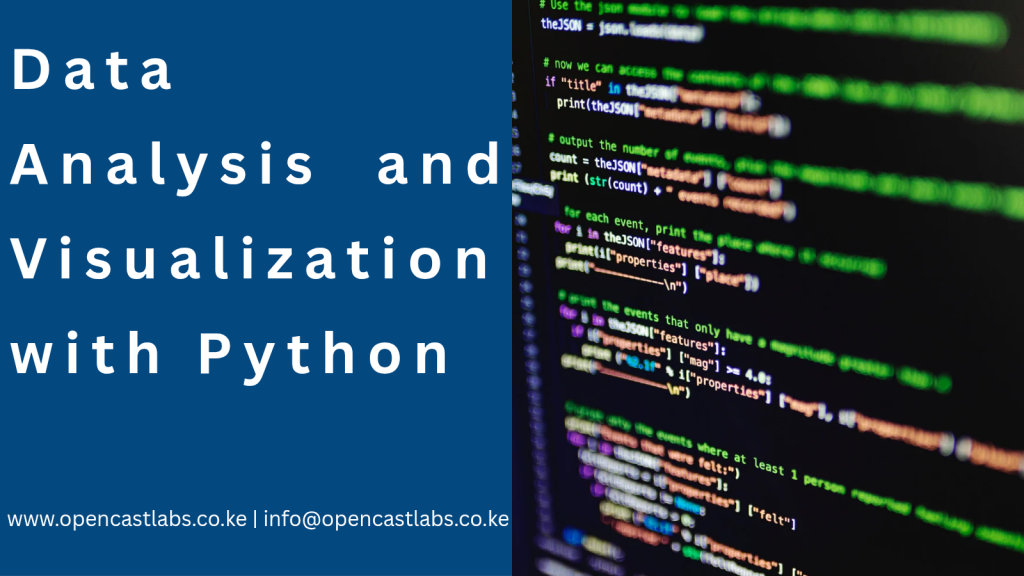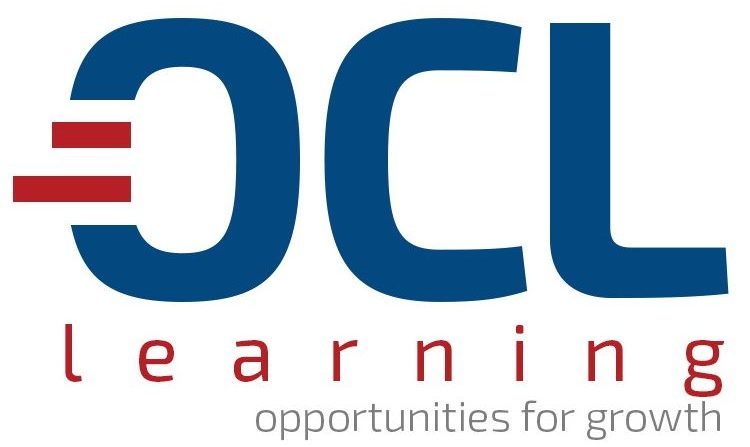Data Analysis and Visualization with Python

Python Data Analysis training equips learners with the skills to collect, clean, analyze, and visualize data using powerful Python libraries such as pandas, numpy, matplotlib, seaborn, and plotly. Participants learn how to perform pivot-style summarization, group and aggregate data, identify trends, and create both static and interactive visualizations to support decision-making. The course blends practical, hands-on exercises with real-world datasets, enabling learners to transform raw information into actionable insights and produce professional, shareable reports and dashboards.
Duration: 5 Days (can be condensed to 3 days)
Level: Beginner → Intermediate
Tools: Python 3, pandas, numpy, matplotlib, seaborn, plotly, Jupyter Notebook
Module 1 – Introduction to Data Analysis with Python
Learning Objectives:
- Understand the Python ecosystem for data analysis.
- Set up the environment for Jupyter-based analysis.
- Load and preview datasets.
Topics:
- Why Python for data analysis?
- Installing Python, Jupyter Notebook (Anaconda or pip)
- Core libraries: pandas, numpy, matplotlib, seaborn, plotly
- Reading data from CSV, Excel, SQL, JSON, APIs
- Inspecting datasets:
.head(),.tail(),.info(),.describe()
Exercise:
- Load a sample sales dataset and display its structure.
Module 2 – Data Preparation & Cleaning
Learning Objectives:
- Prepare raw datasets for pivot analysis.
- Handle missing, duplicate, and inconsistent data.
Topics:
- Indexing and selecting data
- Filtering rows, selecting columns
- Renaming columns
- Handling missing data (
fillna,dropna) - Removing duplicates
- Data type conversions (string, numeric, datetime)
- Creating calculated columns
Exercise:
- Clean an HR dataset to prepare it for pivot table summarization.
Module 3 – Pivot Tables in pandas
Learning Objectives:
- Perform pivot-style data summarization in Python.
- Understand the difference between
pivotandpivot_table.
Topics:
pivot()vspivot_table()- Aggregating with
sum,mean,count,min,max - Multi-level pivot tables
- Applying multiple aggregations in a single pivot
- Formatting pivot results
- Comparing pivot tables to Excel’s PivotTable
Exercise:
- Create a pivot table summarizing sales by Region and Product Category.
Module 4 – Grouping & Advanced Aggregations
Learning Objectives:
- Use
groupby()for flexible pivot-style analysis. - Reshape data with stacking/unstacking for reporting.
Topics:
groupby()basics and multi-level grouping- Custom aggregation functions
- Calculating percentage shares & rankings
- Cumulative totals and moving averages
- Reshaping data with
.melt()and.stack() - Joining and merging multiple datasets
Exercise:
- Produce a ranked sales report with percentage contribution per region.
Module 5 – Static Data Visualization
Learning Objectives:
- Visualize pivot results with Matplotlib & Seaborn.
- Choose the right chart type for data insights.
Topics:
- Matplotlib basics: figure size, labels, titles, legends
- Seaborn overview and advantages
- Bar charts, line charts, scatter plots, histograms
- Boxplots & violin plots for distribution analysis
- Heatmaps for pivot table results
Exercise:
- Turn a pivot table of sales by region/month into a heatmap.
Module 6 – Interactive Data Visualization
Learning Objectives:
- Build interactive charts and dashboards in Python.
Topics:
- Introduction to Plotly Express
- Interactive bar, line, pie, scatter plots
- Adding tooltips, hover effects
- Filtering data dynamically
- Exporting interactive charts to HTML for sharing
Exercise:
- Build an interactive sales dashboard with filters for Region and Product.
Module 7 – Case Studies & Projects
Learning Objectives:
- Apply pivot analysis to real-world datasets.
- Create end-to-end reports.
Case Studies:
- Sales Analysis: Identify top products, seasonal trends, and regional performance.
- HR Analytics: Track employee attrition rates by department and tenure.
- Finance Reporting: Compare budget vs actual spend per quarter.
Capstone Project:
- Load dataset → Clean → Pivot Analysis → Visualization (static & interactive) → Export report.
Module 8 – Exporting & Reporting
Learning Objectives:
- Save pivot results and visualizations for sharing.
Topics:
- Exporting DataFrames to Excel, CSV, JSON
- Saving plots as PNG, JPG, SVG
- Exporting Plotly dashboards as HTML
- Automating report generation with Jupyter
Exercise:
- Export a pivot table sales dashboard as an Excel file with charts embedded.
Expected Outcomes
By the end of this course, participants will be able to:
- Import, clean, and prepare data for analysis.
- Create pivot-style summaries in pandas.
- Visualize insights using static and interactive charts.
- Build and share complete analytical dashboards.
- Automate parts of the reporting process.

